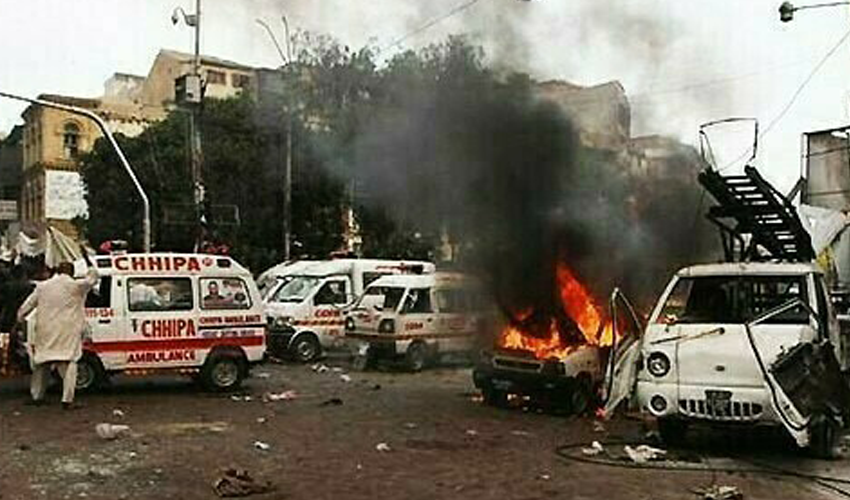Three killed in suicide attack on foreign nationals in Karachi
Two security guards, a passer-by among those injured in attack in Mansehra Colony of Landhi
Two security guards, a passer-by among those injured in attack in Mansehra Colony of Landhi
The $20 million investment will fuel a spectrum of programs under the Generation Unlimited project,
Attributes current rise in terrorism to policies implemented by former PTI govt
President Zardari and PM Shehbaz also condemn the terror attack
This series promises to elevate your home entertainment to new heights
He was appointed in April 2023
'My job is to help players as coach': Luke Ronchi
Suicide bomber's head, legs recovered from blast site; launcher found fitted to submachine gun
Initial findings suggest involvement of separatist organization, slain terrorist hails from Panjgur
Two security guards, a passer-by among those injured in attack in Mansehra Colony of Landhi
Polls being held on 5 NA seats, 12 PA, 2 each of Khyber Pakhtunkhwa and Balochistan
Stock market witnesses record investment in seven years
Sources said Sugar Advisory Board might allow export of surplus sugar
Report says Pakistan's growth rate in 2024 expected to surpass that of 2023
Swearing-in ceremony held at Governor House where governor administers oath to ministers
Sources said Sugar Advisory Board might allow export of surplus sugar
Sharif bagged immense popularity with ‘Bakra Qiston Pay’
This series promises to elevate your home entertainment to new heights
President Zardari and PM Shehbaz also condemn the terror attack
Study discovers that sound coming from a disturbed plant could be heard over a meter away
Economic ups and downs can be managed through 'Charter of Economy'

